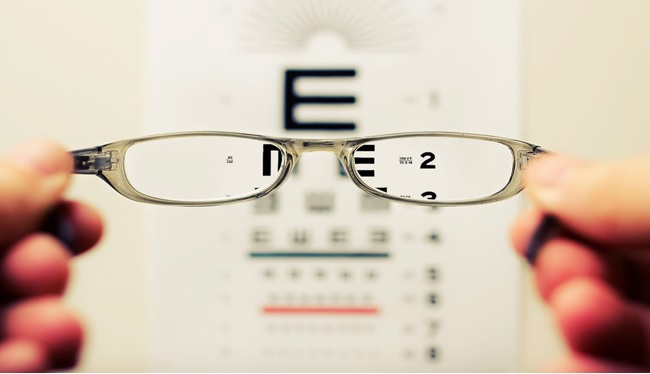Easy Guide To Reading Your Eye Prescription
You walk into your eye doctor’s office and you play the “game” which is better 1 or 2. You aren’t sure how, but your choices allow you to see the world. At the end of your examination, you are given your prescription for glasses with signs and numbers but you have no idea what it means.
Let’s take a look at an example and learn the basics!
| SPH | CYL | AXIS | |
| OD: | -4.00 | +0.50 | 090 |
| OS: | +3.50 | +1.00 | 180 |
First, let’s start with the headlines. OD ( which in Latin stands for oculus dextrus) means the right eye and OS (oculus sinister) is your left eye. If you see OU, this means both eyes.
Now let’s start with the first column: SPH (sphere).
I want you to imagine a number line. Remember those! The zero is what is known as the word ‘Plano’ in the eye industry. If you see the word Plano– this means no power. You do not need any power to see distance.
| SPH | |
| OD: | -4.00 |
| OS: | +3.50 |
Looking at our number line, we have (+) positive and (-) numbers. In either direction, the bigger the number or further away the number is from Plano… the stronger your power, the stronger your glasses.
If you see a (+) positive number in this column, this means that you are farsighted or hyperopic. In our example above, this person’s left is farsighted. If you are farsighted, this means that you have trouble seeing things near.
If you see a (-) negative number, this means that you are nearsighted or myopic. Looking at our example, the right eye is nearsighted. Being nearsighted means that you have a hard time seeing at a distance.
Now, what does the CYL (cylinder) & AXIS mean?
These two go hand in hand. You can have Plano in the SPH column and numbers in the CYL and Axis OR you can have numbers in the Sph and no numbers in these columns.
If you have numbers in these columns (Cyl and axis) – this means that you have astigmatism. Astigmatism describes the curvature of your eye- how steep or flat your eyes are. Normally, the front part of your eye known as the cornea has a spherical shape like a basketball. When you have astigmatism, your eye is shaped more like a football – more curved on one side than the other. The amount of astigmatism you have goes in the CYL column. The bigger the number, the more astigmatism you have.
Let’s look at our example:
| SPH | CYL | AXIS | |
| OD: | -4.00 | +0.50 | 090 |
| OS: | +3.50 | +1.00 | 180 |
This shows that OS (the left eye) has more astigmatism than the OD (right eye).
So, where does the axis come into play?
The axis can range from 0-180 degrees. It’s not only important to know how much astigmatism you have, but also where the curved part of your eye is. This axis describes its orientation.
Now, that you have an understanding of your prescription, let’s get out there!
Go to your nearest optical shop and buy a pair of awesome glasses!
It’s time to see the world clearly!
About the Author:
My name is Jesselyne but you can call me Jesse for short. I help ophthalmology, optometry, and optical businesses specializing in the eye field attract more customers and generate more income by using high-converting copy and sales strategies.
I have over 5 years of experience in the industry: I worked as a technician, scribe, imager, surgical coordinator for private practice as well as a research technician at NYU. Currently, I am studying to be an orthoptist. With this background, I have the unique ability to not only understand your audience but also have a direct and caring voice thus delivering an engaging, clear, and purposeful message.
Social Media:
Linkedin:https://www.linkedin.com/in/jesselyne-abel-37559564/
Website: expresswithjess.com
